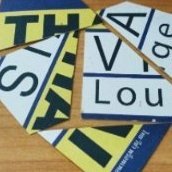Doctor helping downed pilot is shocked to find Harrison Ford
-
Recently Browsing 0 members
- No registered users viewing this page.
Announcements
-
Topics
-
-
Popular Contributors
-
-
Latest posts...
-
5
Opening Krungsri bank account
Thanks - I didn't consider that reason -
23
Immigration will visit me to fact-checking visa extension
Oh wow, I didn't know that. That definitely would have been handy as it was a day out of my holiday and 12k for the Bangkok Airways flights. Good to know if ever needed in future, thanks. -
66
-
16
Train Timetables
But you are not in UK or EU. You need to bear in mind the Thai rail system was neglected for many years and it is only in the last decade have they started to make improvements, there is a saying about Rome and days. I found the best approach is to use the Seat61 guy to get a train number. https://www.seat61.com/Thailand.htm#Bangkok_to_Chiang_Mai Then google the train number and a variety of sites will give you a timetable. eg https://www.thailandbytrain.com/NorthEasternLine.html You also need to remember all trains do not offer the same services or stopping points so the codes need to be checked. I would suggest using first class if you can get it, much easier when it comes to refreshments. Us Brits are not that familiar with the concept of ID cards so a passport requirement is not that out of the norm. -
14
Petchaburi, Dept. Land Transport, 5 year driver's license.
Got it! That is the one in Petchaburi which includes Cha-Am, Hua Hin and adjacent territory. Thank you for your help. -
3
BA pilot left cockpit door open ‘so family could see him
Personally I think either you missed the point of the guy you replied to or you are being overly pedantic........... You could equally have mentioned the illicit drugs........
-
-
Popular in The Pub




.thumb.jpg.3ee24d9400fb02605ea21bc13b1bf901.jpg)





Recommended Posts
Create an account or sign in to comment
You need to be a member in order to leave a comment
Create an account
Sign up for a new account in our community. It's easy!
Register a new accountSign in
Already have an account? Sign in here.
Sign In Now